Published 5 December 2020 ● Last Updated on 5 December 2020
Imagine telling your child that sustainability is “meeting the needs of the present without compromising the ability of future generations to meet their own needs” (as defined by the United Nations Brundtland Commission in 1987). (Rolling eyes. Big yawn. Slouch on sofa)
Though on point, the child is likely to take one look at your face and make a dash for the door (boring lecture alert!). At least mine would. So how do you tackle the subject of sustainability with kids? I agree that sustainability is a serious issue. But teaching future generations about sustainability does not have to be. Below is a list of ten ideas for teaching kids about sustainable living:
1. Begin at the beginning
To teach children about sustainability, introducing them to some simple concepts for an eco-friendly lifestyle is a good place to start. For instance you can explain the difference between reusable and disposable by pointing out all the reusable things (fabric napkins, dishes, mugs) you use at home. The damage disposable products cause to the environment can be explained by discussing how some materials, like plastic, take up hundreds of years to break down. Even after that it exists in smaller forms such as micro and nano plastic and lingers on forever! Another issue that is important for kids to understand is that of recycling. You can talk to them about how paper is made and how recycling can help protect the forest. When talking about plastics, share some interesting tit-bits with them like how year after year in Singapore, plastic has been the single heaviest item in the incineration plant, and that the plastic recycling rate has been only 4% since the last 2 years.
While talking to kids about all this is fun, it is not fun enough. A creative family activity to teach children about recycling is to make separate bins for every type of waste you have in your home — paper, plastic, glass, and tin cans, and have your kids sort the garbage accordingly. You can ensure that your children understand what goes in the different bins. You can even ask them to decorate the bins with pictures to remind them of what goes where.
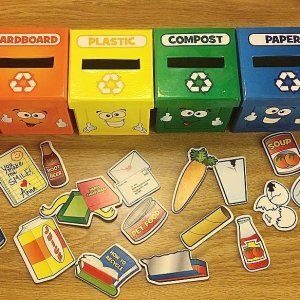
2. Fun with food waste
Even our food leftovers at home can be used for teaching sustainability to kids. Start them off by demonstrating: use leftover cooked or uncooked surplus food to make something new, and well, unexpected for the family. Head over to lovefoodhatewaste for recipes from around the world or Singapore born start-up yoripe if you want to satiate a craving for asian flavours- using leftover food. Tell them the importance of using the various parts of a fruits or vegetable, whether it be various parts of an orange fruit or watermelon rind– choices that are nutritionally and environmentally sound.
And then there is the big daddy of reducing food waste- composting! Instead of throwing the food scraps- those that can’t be used any more- in the garbage bin, use them to introduce children to composting. Give them the responsibility of looking after their own compost container to develop greener habits. Our article on composting wet kitchen waste gives some simple yet effective tips for people trying their hand at composting for the first time. Finally, refer your little ones to your parents and grandparents for a tête-à-tête on how their kitchen saw absolutely minimal food waste.
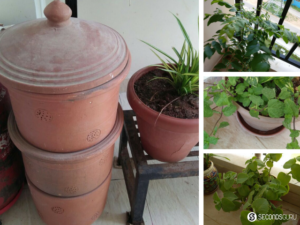
3. Go gaga over gardening
What’s green learning without actual greenery? If you have the space for it (even a small patch will suffice) gardening with children is a fun way to show your kids where their food comes from. If you lack the space, grow herbs in plants and pots or create a simple vertical garden. Follow expert tips to grow 5 healing herbs in your home garden. As they connect to the environment throw in pieces of information such as that Singapore imports 90% of its food and how that contributes to emission of greenhouse gases (GHGs) due to the transportation involved. As kids experience a sense of achievement by growing and harvesting their own food, educate them this also cuts down on plastic waste used in food packaging. To refresh their memories about reusable products use old shoes and pots lying around the house as plant containers.
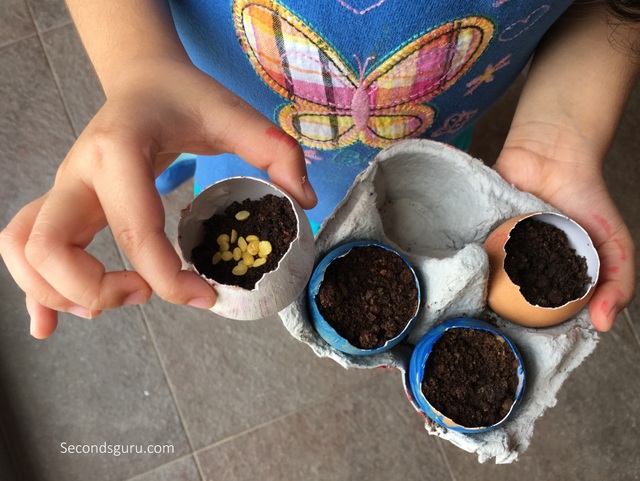
4. Vocal for local
Ya ya we know this is a political slogan, but it fits the bill here. While struggling to tell kids about food security issues in Singapore (in a way that they don’t fall asleep) visiting the local supermarket and picking locally grown herbs, eggs and fish is a great way to teach them about the importance of buying locally grown. Wondering how to spot local vs non-local? Follow our handy tips on where to buy local food in Singapore- online and in-store! Surprise your kids by sharing that even though currently less than 1% of land in Singapore is designated for agricultural use, in 2019, local production of eggs, fish and leafy greens made 26%, 10% and 14% of total food consumption. Heading over to an urban farm in Singapore is another great way for them to appreciate local produce (and get an oxygen boost!)- Bollywood Veggies and Citiponics allow immersive educational tours for families at their farms. Book your spots now!
5. Completely craft(y)
Now that your kids are familiar with words like ‘recycle’ and ‘reuse’, it’s time to introduce them to another sister (or brother-we are gender neutral that way) term, which is ‘upcycle’. Creating beautiful and functional things out of items which you would usually throw away is a great lesson in cutting down waste and in wise use of resources– ideas central while introducing sustainability practices to children. Help them unleash their creativity by transforming old plastic containers and cardboards into new items, such as jewelry boxes.
The festive season is a superb time to let those little fingers snip and cut away to create decorations with objects at home. This Christmas, involve the kids and upcycle plastic bags (the ones you inevitably end up collecting after a shopping spree) into bright tree décor. Looking to make costumes for Halloween or just a theme party for the kids? Worry not. Just head over to pinterest with your kid and find a handy hack that uses stuff from around the house to create their dream outfit!
As you explore different crafts for kids in your quest for ideas for fun things for kids to do, your kids will witness for themselves how they can find new purpose for old things, keeping them out of landfills and helping the environment.
![Turn wine corks into child's play this summer break! Create raftboats with your kids in this craft activity. [More ideas in the link!]](https://secondsguru.com/wp-content/uploads/2016/05/wine-cork-to-raft-boat-2.jpg)
6. Be water wise
Kids love playing with water (as they should), but they should also know its importance as a precious (and fast repleting ) resource. To teach kids about water waste as a sustainability issue, ask them to be mindful about how much they use when they take a bath, brush, do dishes or play with it in the yard. Remind them that a 10-minute shower uses a whopping 90 litres of water. Help them find ways to collect water when it rains, for instance in a rain barrel or in a water tank, and make a fun sustainability activity out of it by encouraging them to monitor how much water collects over a few days or weeks. Likewise, giving them the task to pour any leftover water from drinking glasses and bottles to your garden’s watering can. encourage them to use that water for watering plants with their own child sized watering cans. While helping them conserve water, sensitise them about the fact that Singapore is one of the most water-stressed countries in the world and the amount of water consumed in the country in one day is enough to fill 782 Olympic-sized swimming pools!
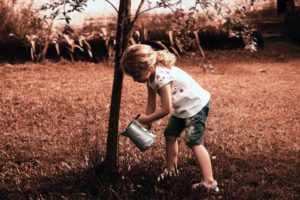
7. Encourage energy efficiency
Children need to know that like water, electricity too needs to be conserved as it is primarily generated from non-renewable natural resources. Rather than constantly reminding (and reprimanding) them to switch off the lights and fans (though that is important too) when they leave a room a fun activity to kids make kids understand about sustainability is to conduct an energy audit together. Take a look at your monthly electricity bill as a family and each one commit to reducing the energy they use through simple steps like unplugging the devices when not in use or even just pulling back the curtain and using God’s natural gift to us! (Don’t forget sunlight is a natural source of Vitamin D and good for the bones).
8. Explore the wonders of outdoors
Indiana Jones never discovered anything sitting at home and neither will your kids. If it’s the environment you want to teach them about you gotta let them loose outdoors. Outdoor discovery play where kids notice small and large critters in your backyard, take their pictures and collect natural materials like twigs, branches, dirt and grass, will help them respect and appreciate nature. Put up bird feeders and water baths to attract birds and squirrels and watch your children’s faces light up as they watch them scamper around. Taking them for ‘green’ walks in the neighbourhood and pick up small bits of rubbish in the parks if you spot any. It is a fun and easy activity with an environmental focus and a cool name- Plogging! Make your outdoor activity eco-friendly with these tried and tested tips.
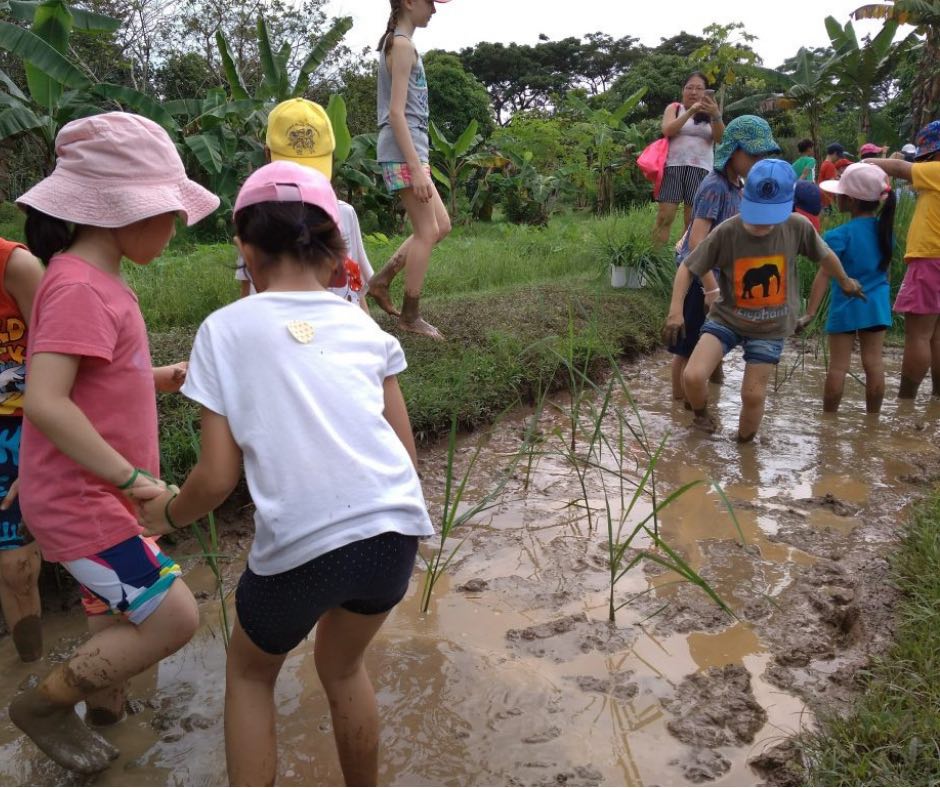
9. Smart (and sensitive) shopping
Kids can learn a lot about sustainability through something as routine as grocery shopping. Before you head out, explain the concept of eco-friendly products and ensure that they know to check whether something is locally produced and organic. Once in the store, you can ask them to help you select the right products by looking out for certain labels or stickers, and looking for products without unnecessary plastic packaging. ( In case you need to up to date yourself about Greenwashing, we have that covered for you). Inculcate in them a love for pre-loved toys and books as a way to reuse and to support charity shops through their purchase.
10. Meatless Mondays (or any other day)
If your family eats meat, having a dedicated meat-free Monday (or as the sub-heading says any other day) is a great opening for a conversation about the environmental impact of livestock farming and what you can do as a family to lower your carbon footprint. Looking to add fun to the discussion? Ask each one to take turns to come up with and prepare (of course the kids will need some help) a meat-free recipe.
And finally, a gentle reminder that kids do as kids see!
It is a known fact that children learn and imitate behaviours by watching others around them. So, if you are looking to introduce your kids to ideas about sustainable living, you need to first evaluate and improve your own habits. When your kids see you making small changes to your lifestyle, even at the cost of small conveniences, they are more likely to adopt sustainable habits. Whether it is turning off the light as you leave the room or trashing your coffee cup in the right bin, remember, those little eyes are keenly observing your every move. So, better be careful!
Related topics:
Eco Films │ 10 Animation films with a green theme to kick-start conversations with your kids



0 Comments